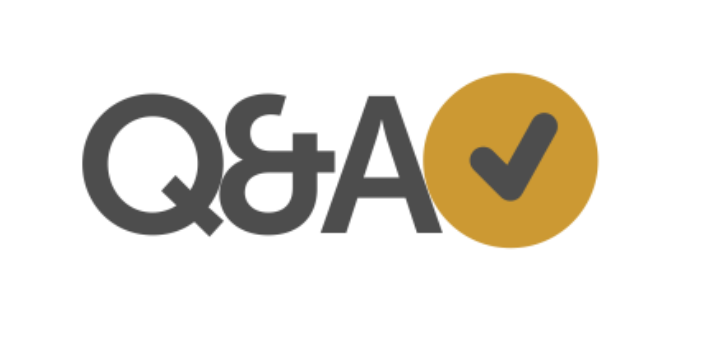When designing a survey, a critical decision lies in choosing between qualitative and quantitative questions. Though different, these types of survey questions are quite complementary.
Qualitative vs Quantitative Survey questions serve distinct purposes in research, and understanding their differences is essential for effective data collection.
If you are wondering what their key differences are, read this interesting piece on qualitative and quantitative types of survey questions with their examples.
Table of contents
- What are Quantitative vs Qualitative Questions in Research?
- Difference Between Quantitative and Qualitative Research
- How Quantitative Questions and Qualitative Questions Affect Your Survey Data
- Benefits of Quantitative Survey Questions
- Benefits of Qualitative Survey Questions
- The Best Question Types for Quantitative Survey Data
- The Best Question Types for Qualitative Survey Data
- Examples of Quantitative Survey Questions
- Examples of Qualitative Survey Questions
- When You Should Use Quantitative and Qualitative Survey Questions
- FAQs
- Conclusion
- References
- Recommendations
What are Quantitative vs Qualitative Questions in Research?
Quantitative questions focus on obtaining precise, number-based answers. They are particularly useful for straightforward analysis and presentation. For instance, questions like “How many times per month do you purchase coffee from a café?” or “Do you prefer to prepare coffee at home or purchase from a café?” fall into this category. Quantitative data provides objective insights into respondents’ behaviors and preferences.
On the other hand, qualitative questions delve deeper, offering context and understanding. These questions explore the “why” behind respondents’ actions. For example, asking about motivations, emerging trends, or customer behaviors provides valuable qualitative data. While quantitative questions yield straightforward facts, qualitative questions reveal the underlying stories and nuances.
Both question types play crucial roles in research, with quantitative questions providing the facts and qualitative questions uncovering the reasons behind those facts
Difference Between Quantitative and Qualitative Research
Quantitative research involves collecting numeric data, while Qualitative research explores personalized behaviors, including underlying motivations.
Researchers often use Quantitative survey questions to analyze specific demographics, such as Gen Z’s financial focus compared to Millennials. Surveys and web analytics typically drive
Quantitative research, even when targeting specific audiences based on demographic factors.
Qualitative research, obtained through contextual inquiries or interviews, provides deeper insights into feelings, attitudes, and habits that complement statistical data.
Combining both approaches yields a comprehensive understanding of audience attitudes, behaviors, demographics, experiences, needs, and wants.
See also: 100+ Frequently Asked Research Questions About Mental Health with Sample Answers
How Quantitative Questions and Qualitative Questions Affect Your Survey Data
Surveys typically involve two main question types: quantitative and qualitative. Each type has its strengths and limitations in terms of the data it provides. The choice between them depends on the specific data you aim to collect.
Quantitative questions focus on numeric measurements, while qualitative questions delve into underlying reasons and motivations.
See also: 120+ Fun Team Trivia Questions & Answers For Team Building
Benefits of Quantitative Survey Questions
Quantitative survey questions serve as a valuable starting point in market research, allowing researchers to gauge the pulse of a population and assess demand for a product or service. Here are the key advantages of using quantitative questions:
- Reaching Broader Audiences: Quantitative survey questions provide broad insights and help validate assumptions about both known and lesser-known audiences.
- Mobile Compatibility: Closed-ended quantitative survey questions work well in mobile survey environments, ensuring an optimal respondent experience.
- Statistical Precision: Quantitative surveys are essential for statistical representation, especially when working with control groups. Results can be broadly deployed and weighted for accuracy.
See also: 20 Frequently Asked Facility Management Interview Questions
Benefits of Qualitative Survey Questions
Qualitative survey questions seek to collect data that is not easily measured such as beliefs, behaviors, and difficulties. They are commonly used in a conversational setting to observe non-verbal signals that may guide the questions.
- Gaining context: Qualitative survey questions are usually open-ended and aim to gather situational information about specific sets of data, often focused on the “why” or “how” logic behind a respondent’s answer.
- Unexpected answers: The open-ended nature of qualitative survey questions creates the opportunity to discover solutions that may not have been offered in a conventional quantitative survey. Allowing respondents to express themselves openly may uncover new avenues to investigate further.
See also: 20 Frequently Asked Microfinance Bank Interview Questions and Answers
The Best Question Types for Quantitative Survey Data
There are various choices for types of questions that gather numerical (quantitative) survey data, addressing inquiries like “what,” “when,” and “how.” Here are some options, among others:
- Radio Buttons: Choose this when you want respondents to pick just one option from a list. It’s also available in grid format.
- Checkboxes: Similar to Radio Buttons, Checkboxes let respondents choose multiple options from a list. It’s also available in grid format.
- Drop Down Menus: Another way for single-select questions, available in grid format.
- Drag and Drop: An interactive way for respondents to arrange or organize responses.
- Likert Scale: An easy method to quickly understand where respondents stand on a rating scale for a specific topic.
- Slider Scale: Similar to a Likert Scale, but with a sliding scale for respondents to base their input on.
- Star Ranking: Familiar to those who leave Google reviews, using a one-to-five star system. Respondents rank quality, and it’s presented in a grid format.
- NPS (Net Promoter Score): Displayed as a ranking of 1 to 10, it helps determine a respondent’s satisfaction with a service or product and their likelihood to recommend it.
- Image Select: A fun way to include visuals in your survey, allowing respondents to choose an answer from a set of pictures.
- Card Sort: Combining Drag and Drop with Image Select, Card Sort lets respondents categorize cards into groups.
See also: 20+ Frequently Asked PTDF Interview Questions
The Best Question Types for Qualitative Survey Data
The options for survey questions designed to gather qualitative data are somewhat more limited, but there’s still plenty that can be achieved with them. Here are some common templates for qualitative survey questions, such as:
- Text Box: A brief-answer text space where respondents can write a few words or sentences about their experience. Text Boxes can also be presented in a list format, which is common in contact forms or questions with multiple responses.
- “Other” Box: This is an extra choice added to multiple-choice radio buttons or text box questions. It gives respondents the chance to select “Other” and share an answer that best fits their situation.
- Essay Box: Similar to a Text Box, but with more space for respondents to provide detailed answers.
- Heatmap: This question type enables respondents to click on areas of an image they like or dislike, offering direct qualitative feedback on why they reacted in a particular way.
- Highlighter: Used to gather feedback on text, the Highlighter question type lets respondents highlight and comment on specific sections. This provides qualitative feedback on what should be retained or modified within the passage.
See also: 250+ Best Anime Trivia Questions and Answers (Easiest to Hardest)
Examples of Quantitative Survey Questions
Quantitative survey questions are designed to elicit clear, non-ambiguous answers that can be quantified and compared across a sample of respondents.
Here are 15 examples of quantitative survey questions, grouped by type:
Descriptive Quantitative Survey Questions
- How often do you use our product or service?
- How satisfied are you with our product or service?
- How likely are you to recommend our product or service to others?
- How many hours per week do you spend on social media?
- What is your age group?
Comparative Quantitative Survey Questions
- Which of these brands do you prefer?
- How do you rate our product or service compared to our competitors?
- How does our product or service meet your expectations?
- How do you rank these features in order of importance?
- How do you compare our prices to other similar products or services?
Relationship-based Quantitative Survey Questions
- What is the main reason for choosing our product or service?
- How does using our product or service affect your daily life?
- What factors influence your purchase decision?
- How do you perceive the quality of our product or service?
- What are the benefits of using our product or service?
See also: 250+ Best Christmas Trivia for Kids Questions and Answers (Easiest to Hardest)
Examples of Qualitative Survey Questions
Qualitative survey questions are designed to elicit rich, detailed, and nuanced answers that can reveal the underlying motivations, preferences, and opinions of your respondents. They are often open-ended, exploratory, and descriptive in nature.
Here are 15 examples of qualitative survey questions, grouped by type:
Motivational Qualitative Survey Questions
- What are the main goals or challenges that you have in your current role?
- What are the most important factors that influence your purchase decisions?
- How do you feel about the current state of the industry or market?
- What are the benefits or drawbacks of using our product or service?
- What are some of the unmet needs or pain points that you face in your daily life?
Experiential Qualitative Survey Questions
- How would you describe your experience with our product or service?
- What are some of the best or worst features of our product or service?
- How do you use our product or service in your daily routine?
- How does our product or service compare to other alternatives that you have tried or considered?
- How do you feel after using our product or service?
Attitudinal Qualitative Survey Questions
- How satisfied or dissatisfied are you with our product or service?
- How likely or unlikely are you to recommend our product or service to others?
- How do you perceive the quality, value, and reliability of our product or service?
- How do you rate our customer service, support, and communication?
- How do you feel about our brand, image, and reputation?
See also: 250+ Best Game of Thrones Trivia Questions and Answers (Easiest to Hardest)
When You Should Use Quantitative and Qualitative Survey Questions
Deciding whether to use quantitative or qualitative survey questions depends on your research objectives. In many cases, it’s necessary to use both types at various stages of a research project to get a full understanding of a market need, persona, or user base.
When to Use Quantitative Survey Questions
- Initial Investigation: As quantitative research is usually more cost-effective and less time-consuming than qualitative, it’s advisable to start with quantitative surveys. These surveys help ensure that a research project is tailored to the right target audience before investing in qualitative insights.
- Statistical Insights: Quantitative survey questions allow for the collection of statistically accurate data, aligning with factors like the census. This is particularly beneficial for ensuring a precise sample in polling and national surveys.
- Comprehensive Understanding: Quantitative survey questions are well-suited for obtaining a broad overview of a market, and identifying needs, wants, and preferences for a product or service based on demographic data. This information plays a pivotal role in shaping product development or marketing strategies.
- Measurable Behaviors: Quantitative survey questions are effective in capturing quantifiable behaviors, such as the frequency of website visits, the likelihood of making a purchase, or the willingness to pay for a product or service. These insights contribute to a better understanding of consumer behavior.
- Mobile Survey Environments: The method of survey distribution can impact data quality. In mobile survey environments, where audiences are on the move and using handheld devices or social media, quantitative survey questions with limited answer choices and quick responses often yield higher data quality compared to open-ended questions that require typing and more concentration.
See also: 250+ Best Geography Trivia Questions and Answers (Easiest to Hardest)
When to Use Qualitative Survey Questions
- Gain insights into measurable data context: Starting research with quantitative data may uncover unexpected trends, prompting further investigation within specific groups.
- Uncover elusive behaviors that are hard to quantify: Qualitative research questions can reveal thoughts, opinions, beliefs, motivations, challenges, and goals that are not easily measured.
- Shape personas for understanding: Personas, utilized by designers and marketers, rely on specific motivations and interests. While demographic information often comes from quantitative research, qualitative methods help reveal challenges and needs.
- Explore conversational settings: Qualitative research finds a home in focus groups and interviews, especially in disciplines like psychology and user experience research. These methods rely on qualitative questions to understand motivations and reasoning behind behaviors.
Combine both methods for comprehensive insights. It is beneficial to use a combination of quantitative and qualitative approaches to fill data gaps.
These methods can be applied iteratively throughout a research project to validate insights gathered from either method. Utilizing both types of survey questions provides a holistic understanding of audience segments.
See also: 250+ Best Greek Mythology Vacation Trivia Questions and Answers (Easiest to Hardest)
FAQs
A survey can be qualitative or quantitative. If you create a questionnaire with answer options using a scale then it is quantitative. If you have questions that require detailed responses then it is qualitative. Mixed-method surveys involve both.
Close-ended questions are best used in quantitative research because they allow you to collect statistical information from respondents. If you want to gather a large amount of data that can be analyzed quickly, then asking close-ended questions is your best bet.
Quantitative studies rely on numerical or measurable data. In contrast, qualitative studies rely on personal accounts or documents that illustrate in detail how people think or respond within society.
Qualitative data examples include survey responses that allow for open-ended answers, transcripts from interviews, and notes taken from observations. Quantitative data examples consist of numerical survey responses, test scores, and data related to website traffic.
Gender, country name, animal species, and emotional state are examples of qualitative information.
Conclusion
While creating your survey, think about how you intend to utilize the gathered data. You’ll likely prefer a blend of quantitative and qualitative survey question types.
Each category has its advantages: quantitative data provides factual information, and qualitative data adds depth to the narrative behind the numbers. However, both also come with drawbacks.
Quantitative data may have limitations in offering deep insights, whereas analyzing qualitative responses can be challenging.
For a survey that is not only successful but also provides actionable and insightful results, you’ll probably need to leverage both quantitative and qualitative survey question types.
References
- Resources.pollfish.com – Quantitative vs Qualitative survey questions
- Alchemer.com – Quantitative Questions Versus Qualitative Questions in Surveys
Recommendations
- 250+ Best Halloween Trivia Questions for Kids with Answers (Easiest to Hardest)
- 250+ Best Holiday Trivia Questions and Answers (Easiest to Hardest)
- 250+ Best Math Trivia Questions and Answers (Easiest to Hardest)
- 250+ Best Memorial Day Trivia Questions and Answers (Easiest to Hardest)
- 250+ Best St Patrick’s Day Trivia Questions and Answers (Easiest to Hardest)





